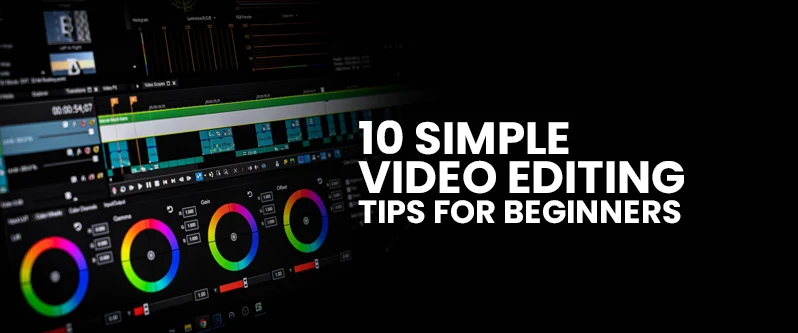Shooting a video is just half of the battle. The other half is editing it. This step requires a bit of creativity and some technical knowledge. Of course, don’t rule out the need for having a reliable internet service, such as a Charter Spectrum billing plan. In this article, we will be sharing some video editing tips/life hacks that can reduce your editing time and make the videos presentable enough for driving engagement.
Let’s take a look…
1: Choose the Right Video Editing Software
First things first, you will need reliable video editing software that can handle all types of editing you require.
While certain video editing software is more popular than others, the most important thing is to choose the one that offers a unique experience and meets your demands. These are some of the features of good video editing software.
- Simple process to upload and import files
- A timeline that can be navigated
- Cut and trim with simple shortcut commands.
- Transitions and effects
- Audio options
- Controls for rendering preview and export
2: Always Create a Directory
Whenever you start a new editing project, create a project directory. There should be one master folder and sub-folders with labels such as music, sound, raw footage, photos, and more. do each a brief description of the content. This will speed up the workflow.
3: Trim the Extras
Trimming is by far the most critical editing tool you will need throughout the process. Trim the beginnings and ends of your clips once you’ve sliced the video into separate clips. This will remove the unwanted frames where nothing significant appears to be happening while highlighting the important moments you actually want to portray.
4: Fix the Audio
While the majority of people watch videos for the bright images and cinematography, audio matters too. Unfortunately, most editors forget to pay attention to the audio.
Consistency and levels are the keys to producing good audio. Most video editing software includes a level reader that lets you monitor audio and ensure that it remains consistent throughout.
5: Keep Things Interesting
It’s important to keep everything visually appealing. The video will look boring if it plays the same shot throughout. Try mixing things up by including the same shot from different angles. This may be as simple as recording the shot with two cameras and flipping back and forth.
You have to use these clips carefully. A good rule is to change the visuals every 4 to 6 seconds to keep your audience hooked.
6: Be Careful with The Cuts and Transitions
Even the simplest transition, such as a conventional cut, should be used in such a way that it is barely noticeable. So, if you’re editing a talking video, try to keep cuts towards the end of the phrase and leave them out in the middle. Otherwise, you’ll wind up with a sentence that has multiple cuts.
When transitioning into a new segment of the video, use transitions like slides and wipes. This will give your audience a breather.
7: Add Text Wherever Possible
Text in videos is an excellent approach to emphasize your video’s essentials. It’s best to include them in a lesson or explainer video. Mark up some of the terms and phrases that you believe could be used as text in the video to reinforce your message.
You can also add subtitles in the video for a wide range of audiences to be able to understand the content of the video.
8: Always Have a Story to Tell
Your entire effort to gather props/actors and shoot the footage will go to waste if you don’t have a story to tell. Why? You will just be spending more time figuring out how to piece the tale together without a clear idea of what the finished video should look like.
Hence, always plan a story, and this should be done before you even start the shooting. A story can help you visualize the entire video ahead of time in the shape of mini-scenes. This will help you edit the video later on, too, so you know exactly what to do when it’s time to piece everything together.
9: Follow the Assembly Line Approach
It can be overwhelming to edit the video if you don’t know where and how to begin. Experts recommend following the assembly line approach to perform the job. Here is what the process looks like:
- Start by watching the entire footage and save the best clips only
- Separate the clips, edit them, and combine everything to create a good flow
- Add the most suitable music
- Rewatch the video and make adjustments using transitions and cuts
- Fine-tune the audio and add more sound effects if needed
- Rewatch the final content
- Once everything makes sense, you are ready to upload the video or forward it to your client
In the end, be ruthless when it comes to editing. You will save a lot of time and effort while editing your video if you follow these tips.




